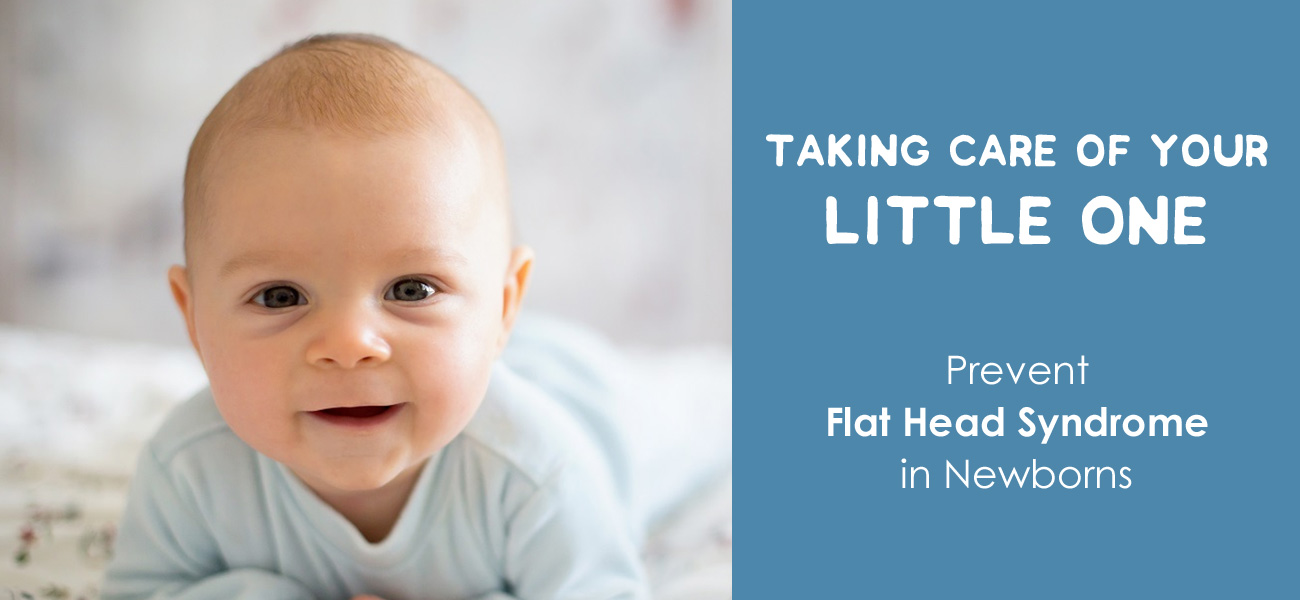- +91 7356244775
- info@zivamoms.com
Welcome to Ziva - The Most Trusted Brand for Moms & Babies
- Home
- Ziva Blogs
- Taking Care of Your Little One - Prevent Flat Head Syndrome in Newborns
Taking Care of Your Little One - Prevent Flat Head Syndrome in Newborns

Taking Care of Your Little One - Prevent Flat Head Syndrome in Newborns
Dec 6, 2021
By
seouser
0 comment(s)
Embarking on the journey of parenting is magical and being a first-time parent is an exciting experience. At the same time, being a first-time parent can be stressful. Not having a clear understanding of the dos and don’ts when taking care of a newborn is one of the foremost problems first-timers face.
Among many things when taking care of a newborn, many parents are unaware that it is important to switch babies’ head positions in specified intervals. Laying the baby in the same position for a long time on the bed or cradle causes the babies’ head to flatten. This condition is known as ‘flat head syndrome’ or medically known as ‘positional plagiocephaly’. The babies’ head is so soft and delicate that the skull bones don’t fuse until they are 9-18 months old. Babies also have very weak neck muscles and usually turn their heads to one side when they are laid down on their back. Regularly putting the baby to sleep in the same position for a long time puts excess pressure on the head. This causes the babies’ heads to take a flat shape. Hence, changing the laying positions of the baby is crucial.
Flathead syndrome can be prevented in many ways. One is by changing the babies’ sleeping position (one day face their head left, the other right, and so on). Babies can also be made to turn their heads by placing something interesting to look at like a toy arch in the crib. Another way is to encourage tummy time. Tummy time is the period when the baby spends awake on their stomach. It will also help in the baby’s motor, visual, and sensory development. In addition to this, holding the baby instead of placing those in the crib can also help in prevention.
Babies are at most risk of developing this condition in the first four months of being born. So, parents should tend to their little ones with a great deal of care during this time period. Be a loving, cautious, and responsible parent to your little one.
Categories
Recent Posts
 Secure
Secure
Payment MethodsPay with worlds most trusted and secure payment gateways
 Fast Delivery
Fast DeliveryFast delivery to your door step anywhere in India.
 Reasonable
Reasonable
PricingWe bring products with excellent quality at a reasonable price
 Individually
Individually
Quality CheckedQuality of each product is checked individually and long life is ensured
ZIVA MATERNITY WEAR - CELEBRATE MOTHERHOOD
The idea of a maternity wear brand was born during the maternity days of May Joy. She watched herself struggling to find the right maternity wear for her and ended up stitching dresses that would fit in her changing body contours. Following her instincts and passion for fashion designing, May Joy opened the first ever maternity retail brand showroom in Kerala on 2012. She fell in love with creating trends in maternity fashion and found practical ways to dress up moms to help them be active and stylish during maternity days. Ziva turned out to be the favourite of moms all over Kerala and that was just a beginning. Today, May Joy is the proud owner of over 20+ maternity wear retail shops across the state.
 Award winning
Award winning
Maternity Brand Fine
Fine
Yarn Weave Soft
Soft
and breathable Designed with
Designed with
Love by women entrepreneur
Payment
100% Payment Protection, Easy Return Policy
Have Queries or Concerns ?
Contact Us
Anti-microbial

Hypo Allergenic

Odourless
